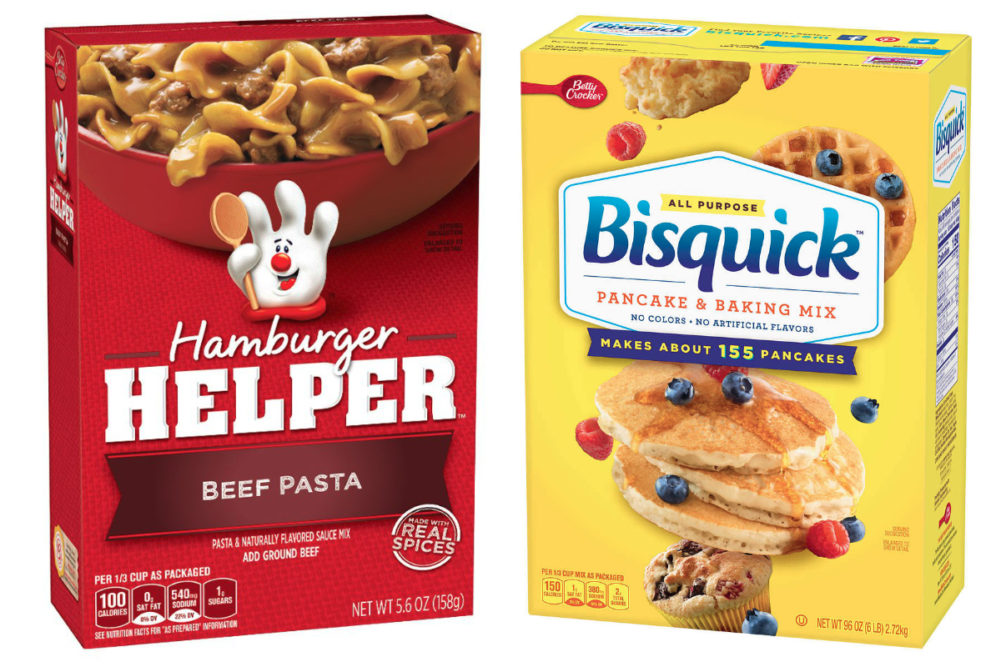MINNEAPOLIS —General Mills, Inc. posted strong financial numbers in the third quarter ended Feb. 28 as consumers ate at home more often when compared to the previous year’s third quarter. Yet the Minneapolis-based company could face challenges in upcoming financial quarters.
General Mills in the fourth quarter will begin overlapping the period when the COVID-19 pandemic hit and changed consumer eating patterns. Inflation is becoming a headwind, too.
Net earnings attributable to General Mills in the third quarter were $595.7 million, or 97¢ per share on the common stock, which was up 31% from $454.1 million, or 75¢ per share, in the previous year’s third quarter. Net sales rose 8% to $4.52 billion from $4.18 billion in the previous year’s third quarter, reflecting market-share gains amid elevated demand for food at home.
“I mean as we look at the third quarter of this year, demand was high all over the world, including the US, fueled by clearly the pandemic as well as stimulus spending and, in addition to that, some weather-related events,” Jeffrey L. Harmening, chief executive officer, said in a March 24 earnings call. “As we look at Q4, we really believe that our sales, both in terms of pounds and pricing, is going to be higher than it was pre pandemic, and we're seeing that in the first couple of weeks of the month, and we're confident the consumer behaviors aren't changing as quickly as some would think.”
Organic net sales were up 7% in the third quarter. General Mills expects full-year organic net sales to increase about 3.5%.
“We expect our Q4 net sales to be below last year's fourth quarter that saw a 21% reported net sales growth due to the pandemic-driven consumer stock up as well as the 53rd week and the extra month of pet results,” Kofi A. Bruce, chief financial officer for General Mills, said in pre-recorded management remarks on March 24.
He added, “As we look ahead to Q4 and fiscal 2022 where we'll be comparing against pandemic-driven results that included unprecedented global at-home food demand, we plan to introduce a two-year compound growth metric into our quarterly communications. This will enable investors to compare our results against pre-pandemic periods and give you better visibility into the underlying momentum in our business. In other words, you'll be able to better see how much demand is sticking.”
Mr. Harmening said inflation will lead General Mills to use such “tools” as list pricing and price-pack architecture.
“So we're seeing it across the globe,” he said in the earnings call. “We’re seeing inflation, and it's broad-based across commodities, across logistics, across things like aluminum and steel, and so whenever you see this kind of broad-based inflation and it's global, that's an environment where you're going to realize net pricing.”
New York-based Morgan Stanley, an investment bank and financial services company, mentioned inflation as a factor in rating General Mills’ stock as equal weight on March 25. General Mills’ share price on the New York Stock Exchange closed at $58.62 per share on March 24, which was down from $61.19 on March 23.
“We remain concerned over rising commodities for the CPG (consumer packaged goods) group, which we believe will drive below consensus growth margins, particularly in food, with limited pricing power,” Morgan Stanley said.
Within General Mills’ North America retail segment in the third quarter, net sales of $2.73 billion were up 9%. Operating profit rose 14% to $605.7 million. Within North America retail, sales increased for US meals and baking, up 15% to $1.17 billion, US cereal, up 9% to $614.1 million, US yogurt and other, up 3% to $225.5 million, and Canada, up 13% to $245.3 million. US snacks sales fell 3% to $476.1 million.
General Mills’ pet segment performed well in the third quarter, with sales up 14% to $436.3 million and operating profit up 9% to $102.3 million. Double-digit sales growth came in both dog food and cat food.
In convenience stores and foodservice in the third quarter, sales fell 10% to $417.1 million while operating profit was down 31% to $63.7 million.
“We continue to see double-digit declines in consumer traffic negatively impact the segment's key away-from-home channels, including restaurants, schools and lodging,” Mr. Bruce said. “The away-from-home declines have only moderated slightly in recent months, and we continue to compete well, having gained market share in measured channels fiscal year-to-date.”
Companywide over the first nine months of the fiscal year, net earnings attributable to General Mills were $1.92 billion, or $3.13 per share on the common stock, which was up 24% from $1.56 billion, or $2.56 per share, over the same time of the previous year. Nine-month net sales rose 8% to $13.6 billion from $12.6 billion.





